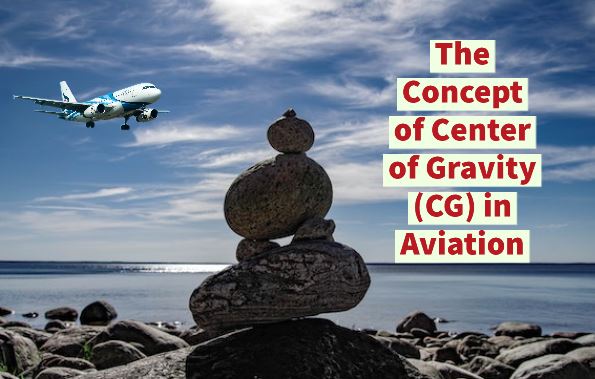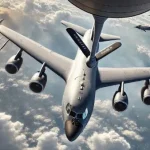Have you ever wondered what keeps an object balanced? Or why do some objects tip over easily while others remain stable? The answer lies in the concept of the center of gravity. Understanding this principle is crucial in various fields, including physics, engineering, and even sports. In this article, we will explore the center of gravity, its definition, and why it’s important.
Definition of the Center of Gravity
The center of gravity is the point in an object where the weight is evenly distributed in all directions. It is the balance point where the object remains stable, regardless of its orientation. In simple terms, the center of gravity is the point at which the object’s mass is evenly distributed.
Determination of the Center of Gravity
To determine an object’s center of gravity, you need to find the point at which its weight is evenly distributed. Several methods can be used to find the center of gravity, depending on the object’s shape and size. For example, in a uniform object like a cylinder or sphere, the center of gravity is at the geometric center. In an irregularly shaped object, you can hang it from different points and find the point where it balances.
Importance of the Center of Gravity
The center of gravity plays a crucial role in various fields, including:
- Physics: The center of gravity is vital in understanding the equilibrium of an object. An object’s equilibrium depends on its center of gravity, and if the center of gravity is outside the object’s base, it will tip over.
- Engineering: Engineers use the concept of the center of gravity to design and build stable structures. The position of the center of gravity determines the stability of a structure and its ability to withstand external forces.
- Aviation: In aviation center of gravity is a mandatory thing to maintain for a safe and stable flight. Every time the load changes in an aircraft there is a shift in the center of gravity and its needs to inform the pilots so that they can adjust the CG using the flight control mechanism and other factors to make the aircraft stable.
- Sports: Athletes use the center of gravity to maintain balance and stability. For example, in skiing, the center of gravity needs to be low to maintain balance and control.
Examples of Center of Gravity in Action
The center of gravity can be observed in various real-life scenarios, including:
- Leaning Tower of Pisa: The Leaning Tower of Pisa is tilted because its center of gravity is outside its base. If the center of gravity was at the center of the base, the tower would be upright.
- Tightrope Walking: Tightrope walkers use the center of gravity to maintain balance and stability. They position their center of gravity low and over the rope to stay upright.
- Bicycles: Bicycles have a low center of gravity to improve stability and maneuverability.
The Importance of Center of Gravity in Aircraft
The center of gravity (CG) is a crucial consideration in the design, operation, and maintenance of aircraft. The center of gravity (CG) of an aircraft is the theoretical point at which the sum of all forces acting on the aircraft would be concentrated, causing the aircraft to remain balanced and stable in any orientation, as if suspended from that point. It is essential to ensure that the CG of the aircraft remains within a specific range for safe flight. In this article, we will explore the importance of the center of gravity in aircraft.
- Stability and Control
The CG location affects an aircraft’s stability and control. If the CG is too far forward, the aircraft will be less stable, and if it is too far aft, the aircraft will be more stable but less controllable. The CG also affects the aircraft’s pitch stability, which is its ability to maintain its pitch attitude without any external forces.
- Performance
The CG location also affects an aircraft’s performance. An aircraft with a forward CG will require more power to maintain altitude and speed, while an aircraft with an aft CG will require less power. The CG location also affects the aircraft’s stall speed, which is the speed at which it stops flying and starts falling. A forward CG location increases the stall speed, while an aft CG location decreases it.
- Weight and Balance
The CG location is critical in determining an aircraft’s weight and balance. The weight and balance of an aircraft must be within specific limits for safe flight. The weight and balance of an aircraft are affected by several factors, including the fuel load, passenger and cargo weight, and CG location. If the weight and balance are not within the limits, the aircraft may be difficult or impossible to control, leading to accidents.
- Operational Limitations
The CG location affects the operational limitations of an aircraft. The aircraft manufacturer provides specific CG limits for each aircraft model. Operating an aircraft outside these limits can cause instability, loss of control, or structural damage. The CG limits are also affected by other factors such as altitude, temperature, and speed.
The center of gravity is a critical consideration in aircraft design, operation, and maintenance. It affects the aircraft’s stability, control, performance, weight, balance, and operational limitations. Pilots must ensure that the aircraft’s CG remains within the specified limits to ensure safe and efficient flight operations. By understanding the importance of the center of gravity, pilots and engineers can make informed decisions that ensure safe and successful flights.
Determining the Center of Gravity of an Aircraft
Determining the center of gravity (CG) of an aircraft is essential for safe flight operations. The CG location affects the aircraft’s stability, control, and performance, and it must remain within specific limits for safe flight. In this article, we will discuss the methods used to determine the center of gravity of an aircraft.
I. Weighing Method
The most common method used to determine the CG of an aircraft is the weighing method. This method involves weighing the aircraft on scales and measuring the distance from the scales to the CG. The weight and balance data obtained from the weighing method are used to determine the aircraft’s CG location.
II. Load and Moment Method
The load and moment method is another method used to determine the CG of an aircraft. This method involves calculating the weight and balance of each component of the aircraft, including the fuel, passengers, cargo, and equipment. The weight and moment of each component are then multiplied and added together to determine the total weight and moment of the aircraft. The CG location is then calculated by dividing the total moment by the total weight.
III. Computer Programs
Many modern aircraft are equipped with computer programs that can calculate the CG location. The weight and balance data are entered into the computer program, and it calculates the CG location automatically.
IV. Flight Test Method
The flight test method is another way to determine the CG location of an aircraft. This method involves conducting flight tests with the aircraft loaded with known weights in specific locations. The aircraft’s response to various flight maneuvers is then observed, and the CG location is calculated based on the observed responses.
Determining the center of gravity of an aircraft is essential for safe flight operations. The CG location affects the aircraft’s stability, control, and performance, and it must remain within specific limits for safe flight. The weighing method, load and moment method, computer programs, and flight test method are the methods commonly used to determine the CG location of an aircraft. By using these methods, pilots and engineers can ensure that the aircraft is properly loaded and balanced for safe and efficient flight operations.
The center of gravity is a fundamental concept that plays a vital role in various fields, including physics, engineering, and sports. Understanding the center of gravity can help us design and build stable structures, maintain balance and control in sports, and even explain why some objects tip over easily. By understanding this concept, we can appreciate the science behind the world around us. Or if you really want to be a good staff in aviation you should know these things what and how they work together to make a level flight.



